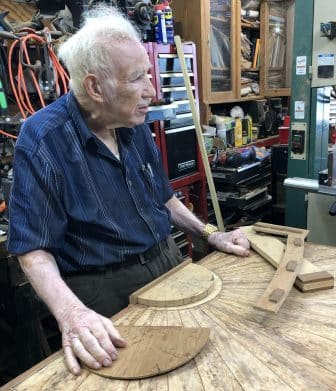
Courtesy of Cybèle Gontar
Ruppert Kohlmaier Jr. in his Harmony Street workshop.
Furniture maker Ruppert Kohlmaier Jr. was just 6 years old when he started working in his father’s shop on Harmony Street in the Irish Channel. Almost 80 years later, he still works there every single day.
His long career has been blessed, he said, by having a legion of New Orleanians as clients, whom he considers to be his extended family.
Select pieces from his clients’ collections will be on view at the Louisiana State Museum’s Cabildo beginning Nov. 4 in the exhibition “A Century on Harmony Street: The Kohlmaier Cabinet Makers of New Orleans.” Curated by gallery owner Cybèle Gontar, the retrospective honors both father and son Kohlmaier and will be accompanied by a catalog.
Gontar — an art historian and furniture scholar who also curated “Chasing the Butterfly Man,” a 2019 Louisiana State Museum exhibition of armoires by an anonymous 19th century cabinet maker — has known the Kohlmaiers since 1998.
“The Kohlmaier workshop is firmly part of the rich history of the furniture trade so celebrated in New Orleans,” Gontar said. “Their studio on Harmony Street has produced perhaps the finest bespoke furniture made in Louisiana, and certainly the most of it.”
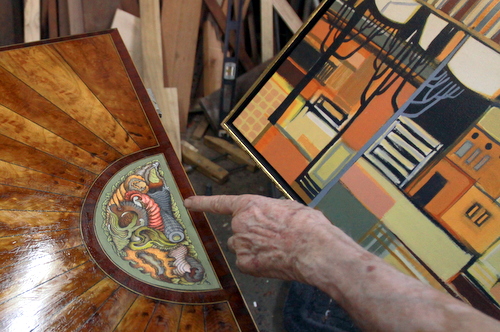
Robert Morris, Uptown Messenger file photo
Ruppert Kohlmaier gestures in 2014 to an inlay he designed on a custom chest of drawers.
Kohlmaier is a wonderful storyteller, especially when he recounts tales about his father, who left Germany in the 1920s to escape the cold, eventually landing in New York.
“But he discovered it was as cold or colder there than in Germany, so he moved to New Orleans after he read an ad for a cabinet maker,” Kohlmaier said. “At first he worked for Feldman Antiques in the French Quarter on Royal Street making reproductions. Mr. Feldman was a good boss, but jealousy by other workers led Daddy to quit.”
That was when Ruppert Kohlmaier Sr. started his own workshop on Danneel Street, and later on Harmony Street.
Kohlmaier credits his furniture-making prowess to his father and the Frenchman who taught him how to carve. “I learned from the best,” he said.
The younger Kohlmaier’s carving ability has paid off many times over, including in 1954 when Gov. Robert Kennon asked him to make 12 copies of a chair for a dining set. The 18-year-old Kohlmaier told him he would do it, but only if he could change the legs.
“‘Why would you want to change the legs?’ he asked me. I told him, ‘They’re not right.’ ‘What do you mean they’re not right’, he said. ‘I’ll show you what they’re supposed to look like,’” Kohlmaier said.
Gov. Kennon agreed that the sample leg that Kohlmaier carved was a big improvement and asked Kohlmaier to complete the commission. As Kohlmaier said: “I didn’t want my name on anything that wasn’t right.”
A visit to Kohlmaier’s shop will find him working on a complex carving or an inlay or perhaps upholstering a fine chair. Many of his tools, which are showcased on the wall behind him, are no longer commercially available.
Kohlmaier may seem to be a little gruff when one first enters the Harmony Street workroom and shop.
“If Daddy didn’t like you, he’d tell you to leave, and have you thrown out of the shop. But I have never been that way,” Kohlmaier said. “I like everybody except for some of the very rudest people.
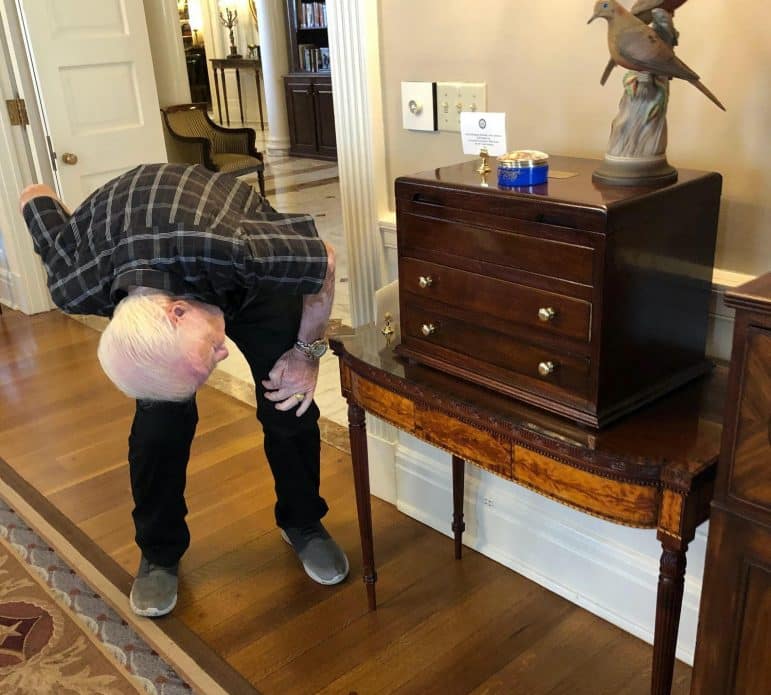
courtesy of Cybèle Gontar
During a July 22 visit to the Governor’s Mansion in Baton Rouge, Ruppert Kohlmaier Jr. examines furniture he made in 1996 for Gov. Mike Foster.
Kohlmaier is, in fact, a convivial man, especially when he starts talking about his work and telling stories about his past.
“I used to be a dancer. I’d go dancing every night of the week, and I taught dancing, too,” he said. “My favorite dance is the cha-cha. The way it was supposed to be in ballroom dancing was that the man led the woman, and she followed. So, a good dancer is someone who knows how to lead.”
Kohlmaier uses the same agility that he once utilized for ballroom dancing to navigate the Harmony Street shop. There are a couple of dogs that keep him company while he works, plus a parade of delivery people and customers.
If Kohlmaier dislikes the fact that the place isn’t air-conditioned, he doesn’t let on; he works every day whether it’s 95 degrees or 35 degrees outside. “You get used to it,” he said.
Over the years a few cabinet makers have tried to pass off their work as authentic Kohlmaiers.
“They would sign the piece ‘Ruppert Kohlmaier,’ but it wasn’t in my father’s or my handwriting,” he said. “I can tell the difference even if the person who buys a piece cannot.”
Kohlmaier has an assistant, but the fact is there is no one to take over his practice once he retires or passes on.
That said, the legacy created by the Kohlmaiers could not be more enduring. And although furniture and artifacts for the exhibition have been selected, Gontar said she welcomes stories and remembrances of the Kohlmaiers for the exhibition catalog. Reach her at louisianafurniture@gmail.com.
The Louisiana Museum Foundation sponsored exhibition will open Nov. 4 at the Louisiana State Museum’s Cabildo location with a celebration — and Kohlmaier will have the opportunity to cha-cha.
For more information and tickets, call 504-558-0493 or email info@thelmf.org.
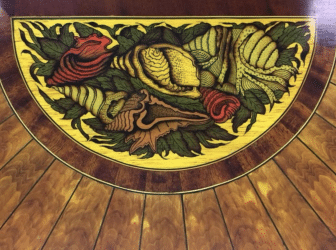
1014-18 Harmony St.
504-289-9977
Reporter R. Stephanie Bruno can be reached at rstephaniebruno@gmail.com.
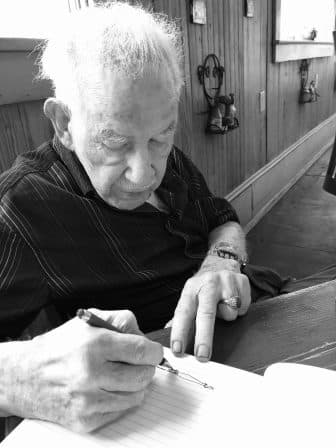
Good reporting.